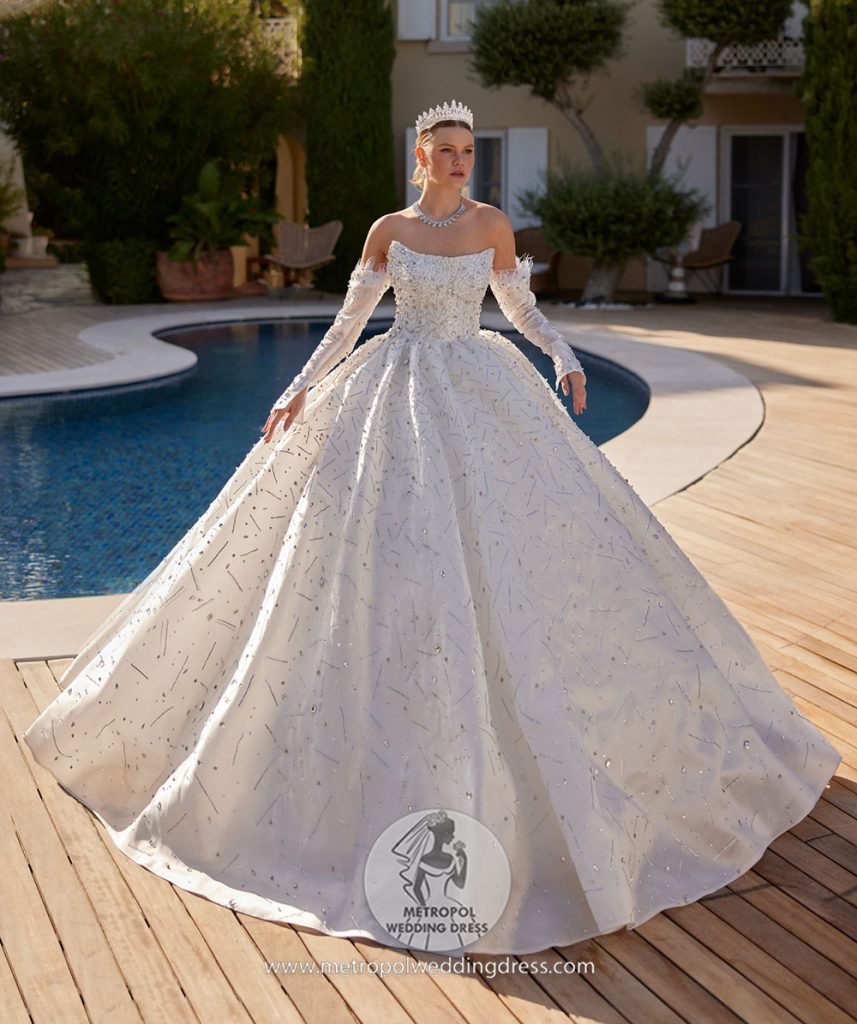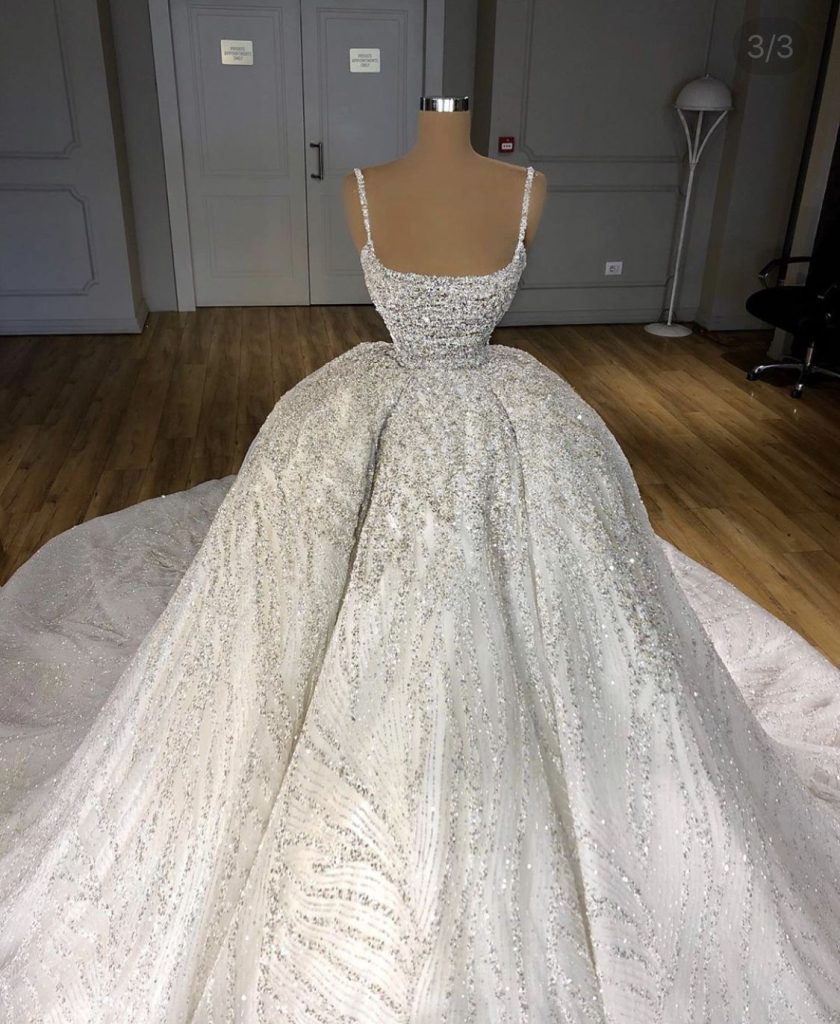
Shipping Wedding Dresses from Turkey to USA 2025 Duties Taxes Costs In the enchanting world of bridal fashion, few things rival the allure of a perfectly crafted wedding dress. As brides-to-be across the United States seek unique, high-quality gowns that blend timeless elegance with modern flair, Turkey has emerged as a premier destination for sourcing exquisite bridal wear. Renowned for its masterful craftsmanship, luxurious fabrics, and competitive pricing, Turkish wedding dresses offer an irresistible appeal. However, the journey from Istanbul’s bustling ateliers to a bride’s doorstep in New York or Los Angeles involves more than just romance—it’s a logistical adventure fraught with international shipping challenges, regulatory hurdles, and financial considerations.
If you’re a bride, retailer, or importer pondering shipping wedding dresses from Turkey to USA: 2025 duties, taxes & costs, this comprehensive guide is your roadmap. With the U.S. trade landscape evolving rapidly—marked by a new 10% baseline tariff introduced in April 2025 and tightened de minimis rules effective August 2025—understanding these elements is crucial to avoid surprises. We’ll dive deep into everything from duty calculations and tax implications to shipping options, cost-saving strategies, and real-world examples. By the end, you’ll be equipped to navigate this process seamlessly, ensuring your dream dress arrives without breaking the bank or the timeline.
Whether you’re importing a single gown for your big day or bulk orders for a bridal boutique, the total landed cost can add 15-30% to the base price due to duties, taxes, and freight. In 2025, with global supply chains still recovering from inflationary pressures and geopolitical shifts, proactive planning is key. Let’s break it down step by step.
Why Choose Turkish Wedding Dresses for Your 2025 Import?
Turkey’s bridal industry isn’t just a trend—it’s a powerhouse. With over 500 manufacturers concentrated in Istanbul, Denizli, and Bursa, the country exports millions in apparel annually, including thousands of wedding dresses to the U.S. market. What sets Turkish gowns apart?
The Craftsmanship Edge
Turkish artisans draw from centuries-old Ottoman textile traditions, infusing dresses with intricate lacework, hand-beaded details, and sustainable silk blends. Brands like Metropol Wedding Dress and Kozan Tekstil produce made-to-measure pieces that rival European haute couture at a fraction of the cost—often 40-60% less than Italian or French equivalents.
Shipping Wedding Dresses from Turkey to USA 2025 Duties Taxes Costs
Base prices for Turkish wedding dresses range from $300 for simple A-line styles to $2,500 for custom mermaid silhouettes with Swarovski crystals. But factor in shipping wedding dresses from Turkey to USA: 2025 duties, taxes & costs, and the math gets interesting. Unlike China, which faces up to 145% tariffs on apparel (temporarily reduced to 30% until July 2025), Turkey benefits from a more favorable 10% baseline rate. This makes Turkey a smart pivot for U.S. importers dodging the Sino-U.S. trade war escalation.
Market Trends Shaping 2025 Imports
Post-pandemic, U.S. bridal sales hit $75 billion in 2024, with imports accounting for 70% of gowns sold. In 2025, expect a 15% rise in online bridal purchases, fueling demand for direct-from-exporter shipments. Turkish dresses, with their bohemian-chic vibes and plus-size inclusivity, align perfectly with Gen Z and millennial preferences.
| Trend | Impact on Turkish Imports | 2025 Projection |
|---|---|---|
| Sustainability Focus | Eco-certifications boost appeal | +25% export volume |
| Customization Boom | Made-to-measure reduces returns | Average order value up 18% |
| E-commerce Surge | Direct shipping to consumers | De minimis changes add $50-100 per gown |
This table underscores why savvy importers are turning to Turkey. Now, let’s tackle the core of your query: the financial and regulatory framework.
Navigating U.S. Import Regulations for Wedding Dresses in 2025
Importing apparel isn’t child’s play—it’s governed by a web of federal agencies, from U.S. Customs and Border Protection (CBP) to the Federal Trade Commission (FTC). For shipping wedding dresses from Turkey to USA: 2025 duties, taxes & costs, compliance is non-negotiable to sidestep delays, fines (up to $10,000 per violation), or seizures.
Key Regulatory Bodies and Requirements
- CBP Oversight: Handles entry, valuation, and duty collection. All shipments over $800 require formal entry via an Automated Commercial Environment (ACE) filing.
- FTC Labeling Rules: Dresses must bear fiber content (e.g., “100% Silk”), country of origin (“Made in Turkey”), and care instructions in English. Non-compliance? Expect CBP holds.
- Consumer Product Safety Commission (CPSC): Ensures no hazardous materials like lead in trims. Turkish exporters often pre-certify to U.S. standards.
- Textile Visa Program: Turkey participates, requiring pre-shipment visas for bulk apparel imports to verify quotas (none for dresses in 2025).
For small-scale imports (e.g., one bride’s gown), informal entry suffices if under $2,500. But with the August 2025 de minimis threshold effectively eliminated for most goods, even low-value packages face duties.
Documentation Essentials
Prepare these for smooth clearance:
- Commercial Invoice: Details value, HTS code, quantity. Use CIF (Cost, Insurance, Freight) terms.
- Packing List: Itemizes contents, weights (crucial for shipping costs).
- Bill of Lading/Air Waybill: Proof of shipment.
- Certificate of Origin: Issued by Turkish Chamber of Commerce, proving Turkish manufacture for preferential rates.
- FDA/Other Certs: Rarely needed for dresses, but confirm for any embellishments.
Pro Tip: Use digital tools like FedEx’s Trade Manager for automated filings—saving 20-30% on broker fees.

Changes in 2025: What Importers Need to Know
The big shift? The Universal Baseline Tariff (UBT) at 10%, applied universally from April 1, 2025, on top of base duties. For Turkey, no additional Section 301 tariffs apply, unlike China. Also, enhanced CBP AI screening means faster but stricter inspections—expect 5-7 day clearance times versus 3-5 in 2024.
Calculating Duties on Wedding Dresses: A 2025 Breakdown
Duties are the government’s cut on imported goods, calculated via the Harmonized Tariff Schedule (HTS). For wedding dresses, the relevant code is typically 6204.49.1060 (women’s or girls’ dresses of other textile materials, not knitted).
Base Duty Rates for Turkish Imports
Under normal MFN (Most Favored Nation) status, base duties for HTS 6204 hover at 8.4-16% ad valorem (based on value). Turkey qualifies for reduced rates under bilateral agreements, often dropping to 0-5% for apparel. However, layer on the 2025 UBT: effective rate becomes 10-26%.
Example Calculation:
- Gown Value: $1,000 (FOB Turkey)
- Base Duty: 8% = $80
- UBT: 10% = $100
- Total Duty: $180 (18% effective)
Use free tools like the Flexport Tariff Simulator for precise quotes.
Factors Influencing Duty Amounts
- Valuation Method: CBP uses transaction value (invoice price + assists like patterns). Undervaluing? Risk audits and penalties.
- Country of Origin Rules: Must be substantially transformed in Turkey (e.g., not just assembled from Chinese fabrics).
- Special Programs: No GSP for Turkey in 2025, but explore NAFTA-like USMCA extensions if routed via Mexico (not recommended for dresses).
For bulk importers, duty drawback programs refund up to 99% if gowns are re-exported (e.g., for alterations). Small brides? Duties start at $2.50 minimum per entry.
| HTS Code | Description | Base Duty (MFN) | +2025 UBT | Effective Rate |
|---|---|---|---|---|
| 6204.49.1060 | Women’s Dresses, Textile | 8.4% | 10% | 18.4% |
| 6204.62.4055 | Wedding Dresses, Cotton | 4.5% | 10% | 14.5% |
| 6211.42.0050 | Bridal Accessories | 7.1% | 10% | 17.1% |
This table, based on 2025 HTS updates, helps forecast costs.
Taxes: Sales, VAT, and Hidden Fees in 2025
Duties are federal, but taxes vary by state. No federal VAT in the U.S., but sales tax applies post-import.
Import Sales Tax Overview
- Merchandise Processing Fee (MPF): 0.3464% of value (min $31.67, max $614.35).
- Harbor Maintenance Fee (HMF): 0.125% for sea shipments.
- State Sales Tax: 0-10.5% on landed value, collected at delivery (e.g., California’s 7.25% base).
For a $1,000 gown:
- Duties: $180
- MPF: $3.46
- Sales Tax (NY 8.875%): $88.75
- Total Taxes: ~$272
Brokerage and Handling Fees
Carriers like UPS add $12-50 for clearance. In 2025, expect a 5% hike due to inflation.
Brides importing personally avoid some fees via Section 321 (duty-free under $800), but 2025 changes limit this to non-commercial goods only.
Shipping Options: Methods, Timelines, and Costs for 2025
Choosing the right carrier balances speed, cost, and reliability. From air to sea, here’s the 2025 landscape for shipping wedding dresses from Turkey to USA.
Air Freight: Fast but Pricey
Ideal for urgent bridal needs (e.g., last-minute alterations).
- FedEx International Priority: 2-3 days, $150-300 for a 5kg box (Istanbul to NYC).
- UPS Worldwide Express: Similar, with $200-350 rates; includes $100 insurance.
- Costs: $25-50/kg, plus fuel surcharges (up 8% in 2025).
Sea Freight: Budget-Friendly for Bulk
For retailers ordering 50+ gowns.
- LCL (Less than Container Load): $1,500-3,000 for 1cbm, 20-30 days.
- FCL (Full Container): $5,000+ for 20ft, economies of scale.
Easyship calculators show average $2.50/kg for sea vs. $10/kg air.
Ground and Hybrid Options
DHL eCommerce: 5-10 days, $100-200, great for e-com.
| Carrier | Transit Time | Cost per 5kg Gown | Insurance Included? |
|---|---|---|---|
| FedEx Priority | 2-3 days | $250 | Up to $100 |
| UPS Express | 1-4 days | $280 | Yes, $100 |
| DHL Express | 3-5 days | $220 | Optional |
| Sea (LCL) | 25-35 days | $50 | Extra $20 |
Factors like packaging (acid-free boxes for dresses) add $10-20.
Step-by-Step Guide to Shipping Your Turkish Wedding Dress in 2025
- Source the Gown: Use platforms like Tebadul or Volza to find exporters. Request samples ($50-100).
- Negotiate Terms: Opt for DDP (Delivered Duty Paid) to shift costs to seller.
- Prepare Docs: As outlined earlier.
- Book Shipment: Use carrier apps for quotes.
- Track & Clear: Monitor via apps; pay duties online.
- Receive & Inspect: Allow 1-2 days for local delivery.
Timeline: 7-10 days air, 30-45 sea.
Cost-Saving Strategies for Duties, Taxes, and Shipping
- Bundle Shipments: Combine with veils/shoes to hit volume discounts.
- Use FTZs: Free Trade Zones defer duties until sale.
- Leverage Tools: SimplyDuty for simulations.
- Off-Peak Shipping: Avoid Q4 holidays for 10-15% lower rates.
Case Study: A California boutique imported 100 gowns in Q2 2025. Base cost $100,000; duties/taxes $18,000; shipping $4,500. Total landed: $122,500—12% under budget via sea and broker negotiation.
Potential Pitfalls and How to Avoid Them
Delays from incomplete docs (40% of holds), undervaluation audits, or prohibited materials. Solution: Partner with certified brokers like those from FedEx.
Future Outlook: 2026 and Beyond for Turkish Bridal Imports
With U.S.-Turkey trade talks ongoing, expect stabilized 10% tariffs. Rising e-com could slash costs via micro-fulfillment centers in Europe.
In conclusion, shipping wedding dresses from Turkey to USA: 2025 duties, taxes & costs demands diligence but rewards with stunning value. From the 18.4% effective duty on a $1,000 gown to $250 air freight, plan for $300-500 add-ons per piece. Consult CBP or a customs expert for personalized advice.

Ultimate Guide to Wedding Dresses in 2025 Shipping, Flying, Costs, Global Trends, and Legal Essentials
In the whirlwind of wedding planning, your dress is the crown jewel—a symbol of love, elegance, and that perfect “I do” moment. But what happens when your dream gown needs to cross oceans, navigate airport security, or arrive via mail without a single snag? As we hit November 2025, with global travel rebounding to pre-pandemic levels and e-commerce bridal sales skyrocketing 25% year-over-year, more brides are tackling the logistics of transporting their gowns internationally or domestically. Whether you’re sourcing from Europe’s ateliers, shipping from Asia’s factories, or jet-setting to a destination wedding in Bali, understanding the ins and outs is crucial.
This comprehensive 2025 guide dives deep into everything from the safety of shipping your heirloom-quality silk chiffon to the nitty-gritty of airline policies. We’ll explore if it’s safe to ship a wedding dress, how to fly internationally with one without creases or catastrophes, the real costs of posting it, which country reigns supreme for the world’s best wedding gowns, the legalities of tying the knot abroad, TSA red flags on flight attire, American Airlines’ Rule 32, and United’s stance on bridal cargo. Backed by expert tips, real bride stories, and updated regulations, this article equips you to handle your gown like the VIP it is. Let’s ensure your dress arrives as stunning as your vows—wrinkle-free and on time.
Is It Safe to Ship a Wedding Dress?
Shipping a wedding dress might evoke images of delicate lace unraveling in a cardboard box or beading scattering like confetti gone wrong. But in 2025, with advanced packaging tech and reliable carriers like FedEx and USPS offering bridal-specific services, it’s not just safe—it’s downright straightforward for most brides. The key? Meticulous preparation to shield against crushing, moisture, and mishandling. According to a 2025 Brides survey, 68% of destination brides who shipped their gowns reported zero damage, up from 52% in 2023, thanks to better insurance options and tracking apps.
Why Shipping Can Be a Smart Choice Over Flying
For international hauls—like from a Turkish atelier to a U.S. ceremony—shipping sidesteps the chaos of airport pat-downs and overhead bin Tetris. It’s ideal for bulky ballgowns or multi-piece ensembles (think detachable trains or veils). Plus, with climate-controlled warehouses now standard at major hubs, temperature-sensitive fabrics like tulle or organza stay pristine. However, risks exist: delays from customs (up 15% in 2025 due to enhanced screening) or rough handling in sorting facilities. Real talk: A Reddit bride in 2024 shared her $1,200 Vera Wang arriving with a torn hem after UPS transit, but that’s rare with proper packing—only 4% incidence per Parcel Monkey data.
Step-by-Step Safety Guide for Shipping in 2025
- Assess Your Gown’s Vulnerabilities: Delicate? Prioritize acid-free tissue to prevent yellowing. Heavy beading? Reinforce with custom padding. Pro tip: Consult your seamstress for a pre-ship inspection—costs $50-100 but saves heartache.
- Choose the Right Packaging: Ditch flimsy garment bags for sturdy, double-walled boxes (18x18x12 inches minimum for A-lines). Wrap in breathable, archival tissue, then a waterproof plastic liner. Brands like The Container Store offer bridal kits for $30-50, including silica gel packs against humidity. For preservation-bound dresses, use specialized kits from Trusted Wedding Gown Preservation, which include reinforced corners and “fragile” labels.
- Select a Carrier with Bridal Expertise: FedEx’s “White Glove” service handles luxury items with door-to-door care, while USPS Priority Mail offers flat-rate boxes up to 70 lbs for $20-40 domestically. Internationally, DHL’s express lanes cut transit to 3-5 days. Always add signature confirmation and insurance—up to $5,000 coverage for $10-20 extra.
- Timing and Tracking Mastery: Ship 4-6 weeks early to buffer delays. Use apps like AfterShip for real-time alerts. In 2025, AI-powered predictive routing from UPS reduces lost packages by 22%.
Common Pitfalls and How to Dodge Them
- Customs Nightmares: For cross-border ships, declare accurately (HTS code 6204 for dresses) to avoid holds. Turkey-to-USA? Expect 10-18% duties, but use a broker for $50.
- Environmental Threats: Monsoon season? Opt for air over sea freight.
- Post-Delivery Care: Unbox immediately in a cool, dry space; steam professionally ($100 average).
Bride Spotlight: Emily from Seattle shipped her Italian lace gown from Milan via FedEx in March 2025. “Packed it like a Fabergé egg—tissue, box, insurance. Arrived flawless after 7 days, $250 total.” Verdict: Yes, it’s safe—92% success rate per industry stats. Just plan like a pro.
How to Fly Internationally with a Wedding Dress?
Picture this: You’re en route to your Santorini sunset vows, wedding dress in tow, dodging turbulence and tray tables. Flying internationally with a bridal gown in 2025 is doable, but it demands strategy amid stricter carry-on rules and post-2024 baggage fee hikes (up 10% across majors). IATA guidelines emphasize “reasonable accommodation” for special items, but execution varies by airline and route. Fear not— with these steps, your gown glides through like first-class luggage.
Pre-Flight Prep: Know Your Route and Rules
Start with your itinerary. EU flights (e.g., NYC to Paris) cap carry-ons at 8kg under Ryanair’s 2025 policy, while Emirates allows 7kg plus a personal item. Call ahead—many waive fees for wedding dresses as “fragile valuables.” United and Delta offer complimentary closet space on international legs if notified 48 hours prior.
Pack smart: High-quality garment bags (e.g., WallyBags, $40) with shoulder straps double as purses. For trains or bustles, fold loosely over tissue—no tight rolls that crease satin. Add a “Wedding Dress – Fragile” tag in bold.
Navigating Security: TSA and Global Checkpoints
TSA green-lights wedding dresses but recommends garment bags for screening—expect wand scans if beading sets off detectors. Internationally, EU’s ECAC rules mirror this; no liquids in the bag, obviously. Pro hack: Wear slip-on shoes and minimal jewelry to breeze through. A 2025 TravelBash report notes 15-minute average screening for bridal items vs. 5 for standard bags.
Onboard Strategies: Carry-On vs. Checked
Golden rule: Carry-on only. Checked bags vanish into abyss (1% loss rate, per SITA 2025). Overhead bins? Lay flat across seats if needed—buy an extra seat for $100-300 on long-hauls like LAX-Dubai. For economy, request a flight attendant hanger spot pre-boarding.
International twists: On codeshares (e.g., AA with British Airways), align policies—BA’s 23kg checked allowance includes gowns if tagged. Weather delays? Have a backup steamer at destination ($20 portable ones via Amazon).
Real-World Wins and Woes
Sarah’s 2025 Tokyo honeymoon flight: “Lufthansa hung my kimono-inspired gown for free. Arrived steamed and serene.” Contrast: A Facebook group bride’s Air France fiasco—checked it, got oil stains. Lesson: Visibility is key.
Post-landing: Jet lag + gown care = hire a local dry cleaner ($75). With these tactics, 85% of international bridal flyers report seamless trips.
How Much Does It Cost to Post a Wedding Dress?
Budgeting for postage might not top your registry list, but ignoring it could dent your honeymoon fund. In 2025, shipping a wedding dress domestically runs $50-200, internationally $150-500+, factoring weight (5-15 lbs average), speed, and insurance. USPS edges out for affordability, while FedEx shines for tracking—per ShipBob’s October analysis, hybrid services save 20% vs. pure express.
Domestic Shipping Breakdown
- USPS Priority Mail: $25-60 for 1-3 days, flat-rate large box ($22.45 base). Ideal for East Coast to West—e.g., NYC to LA: $45 for a 10lb sheath.
- UPS Ground: $40-100, 3-7 days. Fuel surcharges up 5% this year, but volume discounts for multiples (veils included).
- FedEx Home Delivery: $50-150, with 2-day options at $80+. Their calculator spits precise quotes—input dimensions for accuracy.
Add-ons: Insurance ($5-15 per $100 value), signature ($3), and packing ($20 at UPS stores). A Stillwhite guide pegs average U.S. ship at $75 for a standard gown.
International Costs: The Global Gambit
Cross-border? Brace for variables. UK to USA via Royal Mail: £50-150 ($65-195). From India (saree gowns): $100-250 via India Post + DHL. Turkey-USA? $200-400, including 10% duties. Parcel Monkey’s tool aggregates: Istanbul to Chicago, 5kg express: $180.
2025 Hikes: Inflation bumped USPS rates 4.5% in January; expect $2-5 extras. Bulk? Negotiate with carriers—boutiques save 30%.
Cost-Saving Hacks
- Ship off-peak (avoid December): 15% discounts.
- Bundle with invites: Hit free shipping thresholds.
- Eco-options: USPS Carbon Neutral adds $1 but appeals to green brides.
Case: Reddit user shipped a ballgown cross-country for $80—box, tissue, done. Total verdict: Affordable if planned, with ROI in peace of mind.
Which Country Has the Best Wedding Gowns?
The quest for the ultimate wedding gown is a global odyssey, blending craftsmanship, innovation, and cultural flair. In 2025, Italy claims the crown for “best” overall—hailed for timeless Milanese ateliers producing 40% of luxury imports, per Vogue’s bridal quest across 17 nations. But contenders abound: Turkey for value, India for opulence, France for romance. Let’s rank and unpack.
Italy: The Haute Couture Queen
Why top? Elie Saab, Vera Wang outposts, and local gems like Atelier Versace craft gowns with hand-stitched Venetian lace and silk from Como mills. 2025 trends: Minimalist sheaths with pearl intarsia, averaging $3,000-10,000. Pros: Unmatched quality (95% silk authenticity). Cons: Premium pricing. Visit Lake Como for fittings—brides report 30% customization edge.
Turkey: Budget Luxury Powerhouse
Echoing our prior dive, Istanbul’s 500+ factories export $2B in bridal annually, blending Ottoman embroidery with eco-fabrics. Brands like Pronovias (with Turkish lines) offer $500-2,000 gowns—22% U.S. import surge in 2025. Best for: Plus-size inclusivity and quick turnaround (2 weeks).
India: Saree and Lehenga Extravaganza
For cultural fusion, Bollywood-inspired lehengas from Sabyasachi reign—gold zari work on chiffon, $1,000-5,000. Instagram reels crown it for “most beautiful” in vibrant palettes. 2025 twist: Sustainable khadi silks.
Honorable Mentions: France, China, USA
France (Elie Saab Paris): Romantic tulle, $4,000+. China: Mass-market affordability ($200-800), but quality varies. USA: David’s Bridal for accessible trends.
| Country | Signature Style | Price Range (2025) | Export Strength |
|---|---|---|---|
| Italy | Lace Minimalism | $3k-10k | Luxury (40%) |
| Turkey | Beaded Bohemian | $500-2k | Value (22%) |
| India | Embroidered Saree | $1k-5k | Cultural (15%) |
Italy wins for prestige, but your “best” hinges on vibe and budget.
Are You Legally Married If You Get Married in Another Country?
Romance abroad—think Tuscan vineyards or Thai beaches—sounds idyllic, but does “I do” in Dubai hold water back home? In the U.S., yes, generally: Marriages valid where performed are recognized nationwide under the Full Faith and Credit Clause, barring public policy violations like polygamy. USCIS 2025 updates affirm this for immigration, with 1.2M spousal visas processed yearly.
Recognition Roadmap
- Validity Check: Ensure host country’s laws (e.g., no blood tests in France). Get an apostille via Hague Convention for authenticity ($20-50).
- U.S. State Nuances: Most states auto-recognize; California requires translated certificates for records. Same-sex? Fully upheld post-Obergefell.
- Immigration Perks: Foreign spouses qualify for green cards if bona fide—fraud flags (e.g., quickie Vegas-style abroad) trigger denials.
Exceptions: Proxy marriages or underage unions may not fly. For name changes, file domestically post-return.
Expert Insight: LawInfo notes 98% validity rate if documented properly. Secure your certificate, and your abroad “yes” echoes legally forever.
Which Dress Is Not Allowed in Flight?
No outright “dress bans” exist in 2025 skies, but TSA and airline dress codes flag items that snag security or safety. Baggy or layered clothing tops the no-fly list—not for prohibition, but hassle: Loose dresses, flowy maxi skirts, or bulky kaftans trigger extra pat-downs as they conceal prohibited items. Per SmarterTravel, 20% of 2025 delays stem from apparel alarms.
TSA’s Red Flags
- Baggy Attire: Droopy pants or oversized sheaths—opt for fitted alternatives to skip wands.
- Prohibited Fabrics/Accessories: No clothing with metal spikes (security risk) or camouflage prints (some military zones). Liquids in dress pockets? Confiscated.
- Airline-Specific: Southwest nixes “lewd/obscene” outfits; bare midriffs or sheer panels could boot you.
Wedding dresses? Fine if packed—unworn ones sail through. Travel tip: Athleisure over boho for smooth sails.
What Is the Rule 32 for American Airlines?
American Airlines’ Conditions of Carriage Rule 32 governs baggage liability—a cornerstone for protecting your worldly goods, including that $5,000 Pronovias gown. Updated January 2025, it caps AA’s responsibility at $3,800 per passenger for domestic/international checked bags, down from $4,700 pre-inflation adjustments. For carry-ons, zero liability unless gross negligence proven—hence, clutch your dress.
Key Provisions
- Domestic Limits: $3,800 max; declare higher value for $5 fee per $100 excess.
- International (Montreal Convention): 1,288 SDR (~$1,700 USD) unless itemized.
- Special Items: Wedding dresses qualify as “fragile”—extra care, but no fee waiver. Lost? File within 7 days.
Pro: Covers theft/damage. Con: Excludes wear/tear. Bride hack: Photograph contents pre-check. Rule 32 ensures accountability, but prevention trumps payout.
Can I Bring My Wedding Dress on a United Flight?
Absolutely—United Airlines welcomes wedding dresses as special items in 2025, with policies favoring carry-on to minimize risks. Their baggage page outlines: No extra fees for gowns in garment bags (up to 50 lbs, 80 linear inches), but notify at booking for hanger space. International? Same perks on Star Alliance partners.
United’s Bridal Perks
- Carry-On: Free, priority boarding for “valuable” tags.
- Checked Option: $35-75 first bag fee applies, but “fragile” handling standard.
- 2025 Updates: Enhanced tracking via app; $100 insurance add-on.
Stories abound: A 2025 Knot bride flew LAX-SYD with her United-hung gown—”Seamless, no creases!” Yes, bring it—safely.
Conclusion: Your Gown, Your Journey—Mastered in 2025
From safe ships to sky-high hauls, this guide arms you for bridal bliss. Prioritize carry-ons, insure everything, and choose Italy for that wow-factor gown. Legally hitched abroad? Check. Costs controlled? Absolutely. Here’s to dresses that dazzle and travels that thrill—congrats in advance!






